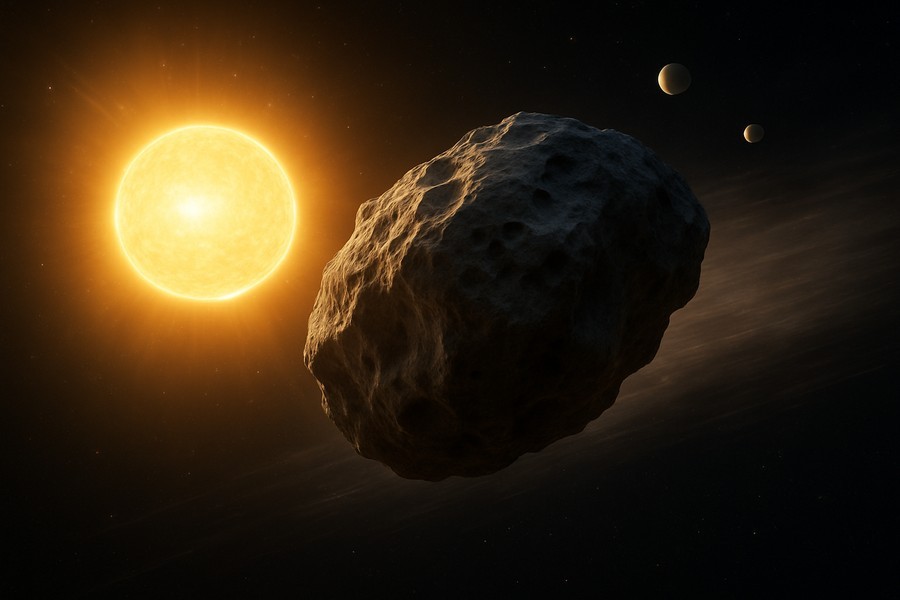
Hidden in the Sunlight: A Speedy, Skyscraper-Sized Asteroid Uncovered
A newly discovered asteroid, approximately 2,300 feet in diameter, has been found zipping through our solar system at a blistering speed. The colossal space rock, dubbed 2025 SC79, was initially hidden due to the sun's brightness.
This skyscraper-sized asteroid completes an orbit around the sun in just 128 days, making it the second-fastest known asteroid in our solar system. It also represents only the second discovered object to have an orbit entirely within that of Venus', even occasionally intersecting with Mercury's orbit.
A Unique Discovery Amidst the Sun's Glare
The asteroid was first identified by an astronomer based in Washington, D.C., who spotted 2025 SC79 in late September. The asteroid's position near the sun made it especially challenging to observe, but its discovery is critical to ensuring that no potentially dangerous space rocks catch us by surprise.
The astronomer explained, "The most dangerous asteroids are the most difficult to detect." Typically, asteroid research identifies these objects in the absence of sunlight, where they can be spotted more easily. However, asteroids close to the sun can only be detected during twilight hours—when the sun is just about to rise or set. These 'twilight' asteroids could present serious impact hazards if they approach Earth.
The Significance of Asteroid 2025 SC79
Asteroids like 2025 SC79 are certainly worth monitoring closely. To give some perspective on its size, consider this: another asteroid discovered earlier this year, known as a "city-killer" and labeled 2025 YR4, measures only around 180 feet wide. Despite its relatively small size, this asteroid could generate 500 times the energy of the atomic bomb that leveled Hiroshima should it collide with Earth.
The discovery of 2025 SC79 was made using a special camera designed to observe dark energy. Further observations were then made to confirm the asteroid's existence and to provide additional data.
Fast-Moving Space Objects: A New Trend?
This is not the first time in recent years that such a fast-moving asteroid has been identified. Another object, known as 2021 PH27, was discovered last year. This asteroid completes an orbit around the sun in just 113 days—only 15 days faster than 2025 SC79. The only solar system object with a quicker orbital period is the planet Mercury, which completes a round trip around the sun in 88 days.
Currently, 2025 SC79's orbit has taken it behind the sun, rendering it invisible for the next several months. However, further observations are planned to gather more information about this intriguing object, which is another piece in the cosmic jigsaw puzzle that aids our understanding of the evolution of our solar system and its potential asteroid threats.
Unraveling the Mysteries of the Solar System
A great number of asteroids in the Solar System reside in one of two belts of space rocks. However, disturbances can knock these objects into closer orbits, making them harder to detect. By understanding how these objects end up in these locations, we can better protect our planet and gain insights into the history of our solar system.
